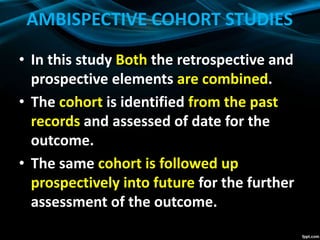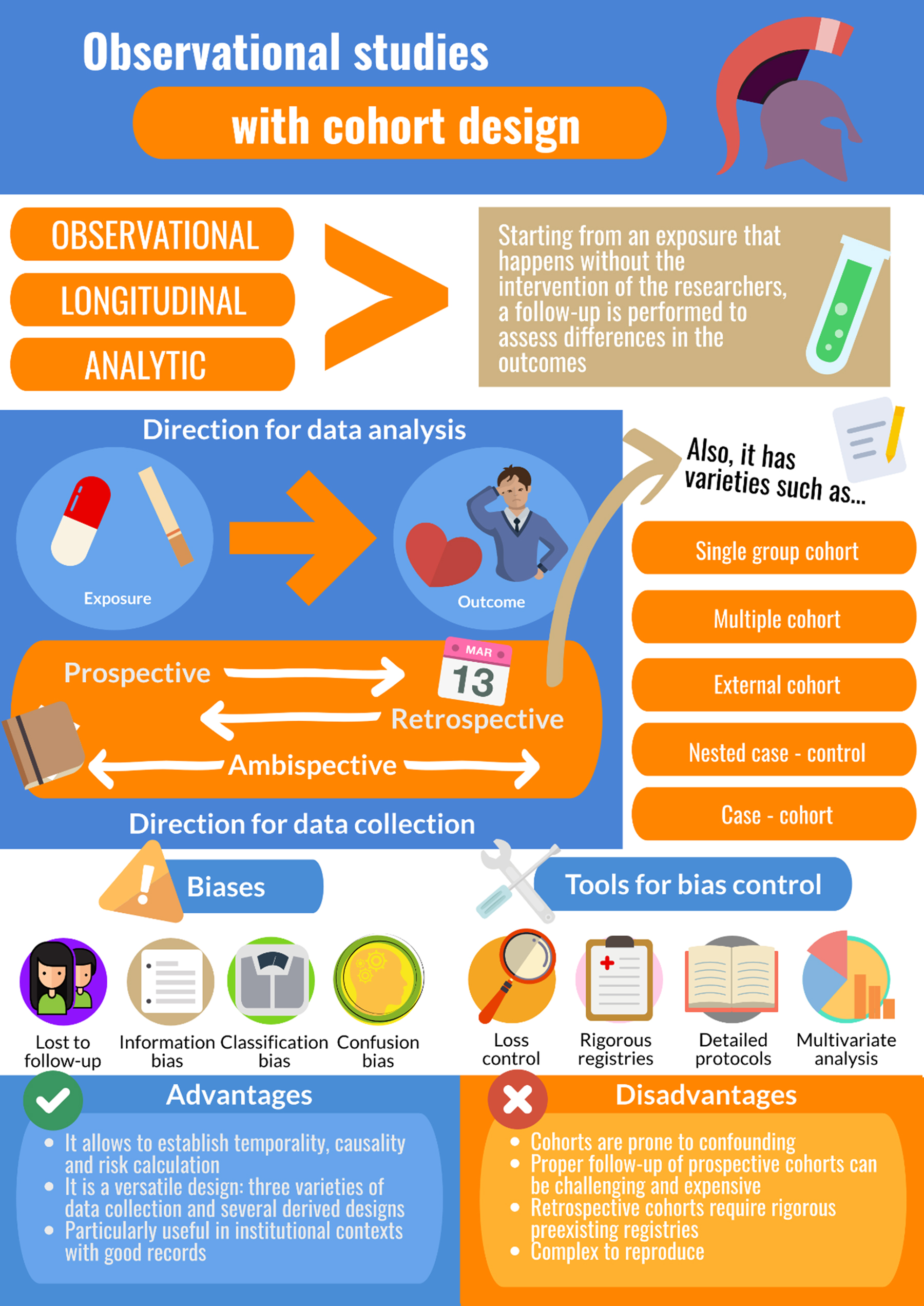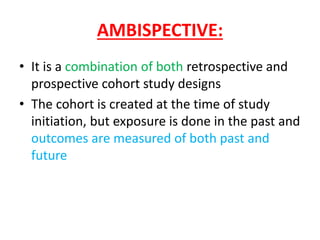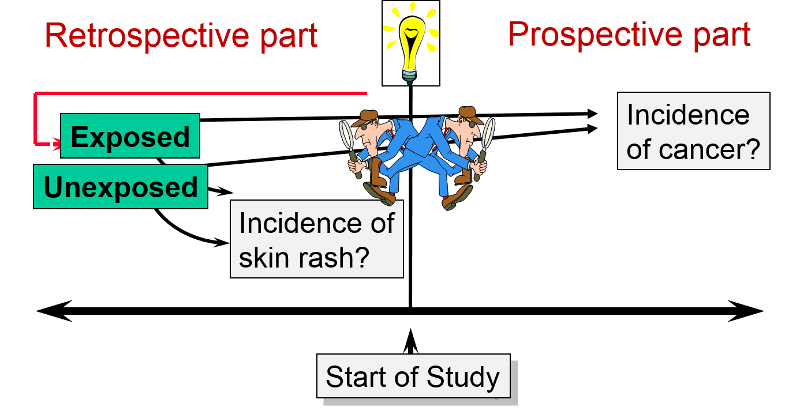An Ambispective Cohort Study Is Also Known as a
- nested case-control study - prospective cohort study - historical prospective study - retrospective cohort study. Have to rely on how that data was collected in the past.
Question 3 2 out of 2 points An ambispective cohort study is also known as a from HLTH 503 at Liberty University.

. 2 METHODS 21 Study setting. Of these mothers 35 have delivered malformed infants. Ambispective cohort study- also known as a historical study a cohort study that makes use of both retrospective features and prospective features.
Retrospective cohort study- A study that uses historical data to determine exposure levels from the past. True False Question 4. A cohort study may also be ambidirectional meaning that there are both retrospective and prospective phases of the study.
Historical prospective study D. Ambispective cohort study- Also known as a historical study. The retrospective and prospective studies feature which is the historical prospective cohort study is known as an ambispective cohort study.
Nested case-control study B. Forty mothers have taken the suspected drug during their pregnancies. Ambidirectional studies are much less common than purely prospective or retrospective studies but they are conceptually consistent with and share elements of the advantages and disadvantages of both.
A backward-looking cohort study is also called a. The sensitivity and specificity of the new test are 60. Question 9 2 out of 2 points An ambispective cohort study is also known as a.
A study that evaluates two treatments for breast cancer. Historical prospective study Question 10 2 out of 2 points A five-year prospective cohort study has just been completed. Retrospective means that it relates to the past.
This study uses both features from retrospective and prospective cohort studies. Secular trends are gradual changes in disease frequency over long time periods where cohort effects are the actual consequence of these long-term secular trends in exposure within a specific cohort. An Ambidirectional Cohort Study.
Women are followed for 5 years to determine if there are any differences in breast cancer recurrence and survival. Ambidirectional studies are much less. A prospective cohort study is a type of cohort study whereby the researchers conceive and design the study recruit subjects and collect background data on all subjects before they start developing noteworthy outcomes.
In this perspective these are longitudinal studies encompassing a time span either from. A study that evaluates two treatments for breast cancer. Historical prospective study D.
3 3 pts An ambispective cohort study is also known as a. Because the investigation started after the cases had already occurred DPHs study of Giardia in Milton is an example of a retrospective cohort study. Historical prospective cohort study.
An ambispective cohort study is also known as a. A backward-looking cohort study is also called a retrospective cohort study. Prospective and retrospective study design refers to the time period in which the study is to be carried.
Women are followed for 5 years to determine if there are any differences in breast cancer recurrence and survival. Also known as an ambispective cohort study Nested Case-Control Study a type of case control-study in which cases and controls are drawn from the population in a cohort study. An ambispective cohort study is also known as a.
The risk ratio was 327. A study that begins in 2010 of the relationship between exposure to chest. A new screening test for Lyme disease is developed for use in the general population.
Nested case-control study prospective cohort study historical prospective study. Ambispective or ambidirectional cohort study The third variant of cohort studies ambispective or ambidirectional studies use preexisting data document events and phenomena that have already occurred and allow for prospectivefuture monitoring. A cohort study may also be ambidirectional meaning that there are both retrospective and prospective phases of the study.
An ambispective cohort study is also known as a. An ambispective cohort study is also known as a. It is a design study that makes use of the retrospective study which determines the baseline exposure and the prospective study that determines the disease incidence in the future.
An Ambidirectional Cohort Study. An ambispective cohort study is also known as a. This study was conducted to gain insight into the sociodemographic profiles of patients attending the NPH and the impact of care and treatment provided by the hospital on epilepsy and the day-to-day lives of PwE.
Ambispective cohort study- also known as a historical study a cohort study that makes use of both retrospective features and prospective features. Women with stage 1 breast cancer are randomized to receive either cryotherapy or traditional lumpectomy. Prospective cohort study C.
This single-center ambispective cohort study was conducted at the NPH between January 2016 and September. Repeated cross-sectional surveys may underestimate. An ambispective cohort study is also known as a.
A design that makes use of both retrospective features to determine baseline exposure and prospective features to determine disease incidence in.

General Concepts In Biostatistics And Clinical Epidemiology Observational Studies With Cohort Design Medwave


Comments
Post a Comment